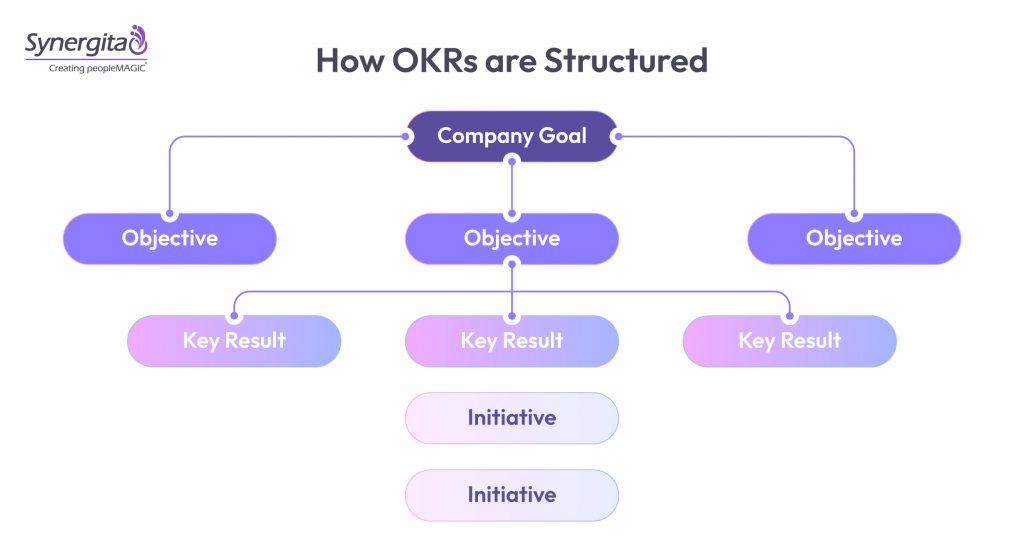OKRs (Objectives and Key Results) are a powerful tool for aligning teams and driving measurable outcomes. Writing effective OKRs requires clarity, focus, and a structured approach. In this blog, we’ll explore how to write OKRs, the difference between OKRs and other goal-setting frameworks, and share actionable OKR best practices for 2025.
Writing Effective OKRs Involves:
Limiting Your OKRs to the Most Necessary
When writing effective OKRs, focus on quality over quantity. Limit your objectives to the top 3–5 priorities for the quarter. This ensures significance and prevents teams from spreading themselves too thin. Too many objectives can dilute focus, making it harder to achieve measurable goals. By prioritizing, you create clarity and alignment across teams.
Clearly Defined Success with Measurable Goals
A well-written OKR includes clear, measurable goals. Ask yourself: Are the objectives specific and easy to understand? Do they include qualitative details? For key results, ensure they are time-bound and provide regular progress updates. Measurable goals help track success and keep teams accountable.
Stay Away from Vanity Key Results Metrics
Avoid vanity metrics that look good but don’t drive real impact. Instead, focus on key result metrics that directly contribute to achieving the objective. For example, instead of tracking “website visits,” measure “conversion rates” or “customer retention.” This ensures your OKR implementation is results-driven.
Set Deadlines for Reinforcing Accountability
Deadlines are critical for reinforcing accountability. Ensure your key results are time-bound and provide early warning signals if progress stalls. This helps teams stay on track and course-correct when necessary. A clear timeline also motivates teams to work towards measurable goals.
Course Correct Your OKR Implementation with Surety
OKRs are not set in stone. Regularly review progress and be ready to adjust if needed. Ask: Are the key results providing actionable insights? Are they challenging the status quo? Course correction ensures your OKR implementation stays aligned with organizational priorities.
Difference Between OKRs and Other Goal-Setting Frameworks
OKRs stand out from other goal-setting frameworks like KPIs or SMART goals due to their focus on alignment and measurable outcomes. While KPIs track performance, OKRs drive
progress towards ambitious objectives. Unlike SMART goals, which are often individual-focused, OKRs emphasize team alignment and stretch goals. This makes OKRs ideal for employee alignment strategies in 2025
Few More of Our Recommendations for OKR Best Practices

What to Look for When Creating an Objective?
When creating an objective, ensure it is significant, clear, and inspiring. Ask: Does it start with a verb? Is it action-oriented? Does it drive change? For example, “Increase customer satisfaction by 20%” is more impactful than “Improve customer service.” A strong objective sets the foundation for effective OKRs.
What to Look for When Creating a Key Result?
Key results should be specific, measurable, and verifiable. Ask: Are they time-bound? Do they provide regular progress updates? Can they be answered with a ‘yes/no’ at the end of the period? For example, “Launch 3 new product features by Q2” is a clear, measurable key result. This ensures your OKR implementation is results-driven and aligned with organizational goals.
Looking for practical OKR examples? Check out our detailed OKR Example Page to see how you can set and track effective goals!
Why Is Synergita OKR Better?
OKRs combine the best of all worlds. They are simple yet powerful, ensuring alignment, transparency, and measurable outcomes. Unlike KPIs, which focus on performance tracking, OKRs drive progress towards ambitious goals. Unlike SMART goals, which are often individual-focused, OKRs emphasize team alignment and stretch goals. And unlike Balanced Scorecards, which can be complex, OKRs are easy to implement and adapt. This makes OKRs the ideal framework for employee alignment strategies in 2025. And Synergita OKR has all of what makes OKR Special in aces. Sign up for a free trial. Or if you need to learn more about OKR, Read our blogs.
